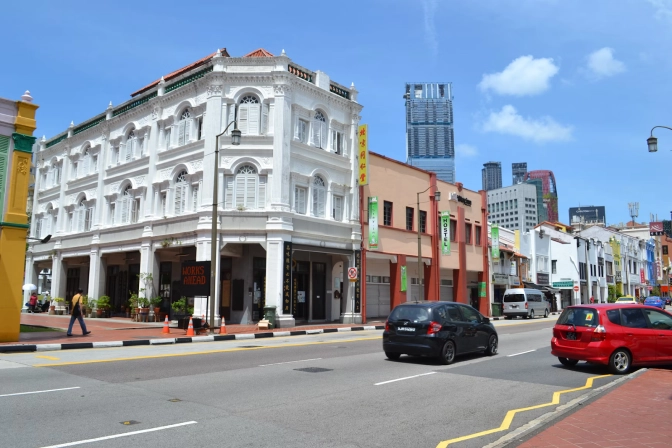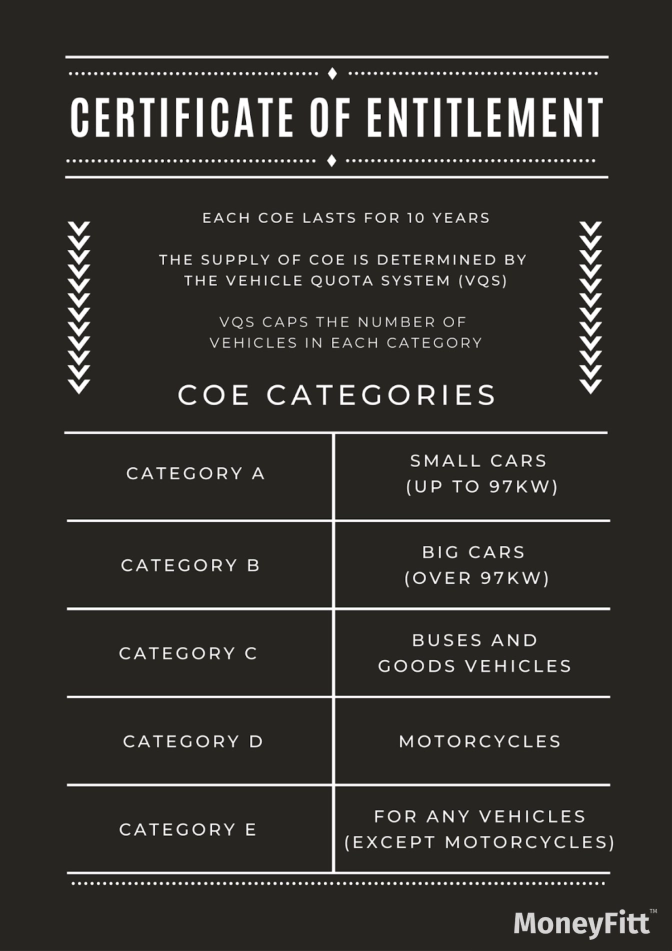Navigating Big Purchases: A Complete Guide to Buying a Car in Singapore
Being honest is essential when determining the reason you wish to drive!
- We often want to own a car for social status purposes, as a symbol of wealth, and be fully aware that it may not yet be necessary.
- Remember to factor in the numerous costs, both upfront and ongoing, of car ownership when deciding whether you can afford to have a car or not.
Why Are Cars So Expensive in Singapore?
Having too many cars on Singapore’s limited road network could cause a lot of disruption. To avoid this, the government has long had measures to limit demand for cars, such as keeping ownership prices high through numerous fees and taxes. We’ll run through all the expenses below.

What Are the Different Costs of Buying a Car?
Use the LTA Car Ownership Calculator here.
Cost of Car
The first and most plain-to-see cost of car ownership is its initial cost of buying. The lowest-priced new passenger car, as of September 2023, is the Perodua Bezza 1.3 Premium X (A), priced at $105,999. If you are looking to spend even less, used cars offer a cheaper alternative.
Certificate of Entitlement (COE)
The upfront costs of a car include the price of the car itself (determined by the importer) plus the Certificate of Entitlement. The COE entitles you to register, own and drive a vehicle for 10 years. After the 10 years are up, you’ll have to give it up or pay more to renew it for an extra 5 or 10 years.
The supply of COEs is limited through the Vehicle Quota System, i.e. there is a limit to the number of cars on the road. COEs are designed to allow market demand to determine who gets to have a car, pushing the cost of owning a car up (by a lot).
To get a COE, you must successfully bid for one at an LTA-administered auction. Vehicles are allocated into one of five categories, which a car dealer usually does on your behalf. The COE premium is cheapest for smaller cars (up to 97kW) and more expensive for larger cars (above 97kW).

Plus these additions, which came into force in 2022:
Category A
COEs obtained from May 2022 (1st bidding exercise) onwards also include fully electric cars with a maximum power output of up to 110kW (147bhp).
Category B
COEs obtained from May 2022 (1st bidding exercise) onwards also include fully electric cars with a maximum power output above 110kW.
Interest Costs
The only way of avoiding interest is to pay the upfront cost of the car in full. Avoid taking on any debt that you cannot afford. Do your due diligence before taking out a car loan, as the methods of computing interest may differ between lenders.
Tip ⭐️
For the same amount of money borrowed, a longer loan tenure means your monthly payment is lower, but your overall interest is MUCH larger!
There are limits to the amount you can borrow based on the Open Market Value (OMW). The OMV is the “original'' price of your vehicle, including the purchase price, insurance, freight and delivery to import the car into Singapore. However, it excludes all taxes and other surcharges like COE, dealer’s profit and registration fees.
- For cars with an Open Market Value (OMV) of less than $20,000, a loan to finance cannot be more than 70% of the purchase price
- For cars with an OMV greater than $20,000, a loan to finance cannot be more than 60% of the purchase price
Learn more about motor vehicle loans here.
Registration Fee
The Land Transport Authority imposes a standard Registration Fee of $220 for new cars.
Additional Registration Fee (ARF)
Your ARF is levied on the registration of new cars and is based on a percentage of the vehicle’s OMV. For the first $20,000 of OMV, the ARF rate is 100%, the next $20,000 is 140%, the next $20,000 is 190%, the next $20,000 is 250% and anything above $80,000 is 320%.

Excise Duty
Imposed by Singapore Customs, this tax is 20% of a vehicle's OMV.
Vehicles Emissions Scheme (VES)
The VES is designed to incentivise Singaporeans to purchase more environmentally friendly cars by offering rebates on low carbon-emitting cars and putting a surcharge on heavy carbon-emitting cars. Vehicles are allocated into specific emission bands (e.g. A1, A2, B, C1 and C2), and each band is subjected to its own rebate or surcharge.

Read more about Singapore’s vehicle emissions scheme here.
Road Tax
Road Tax must be paid every six months or annually for any Singapore-registered vehicle. If you are buying a used car, check to see if any valid road tax is included. The tax takes engine size and vehicle age into account.
You can pay your car tax online here, at AXS stations, via GIRO, or at SingPost and Road Tax Collection centres.
Car Insurance
Car insurance is mandatory. There are three main types of car insurance policies: third party, fire and theft, and comprehensive policies. Several factors determine how much your premiums will be, including how much coverage you would like, your age, type of car you own, driving history, and occupation.
These are all factors that the insurer deems relevant to your risk. Insurance premiums are significantly higher for young adults, as the risk of them being in an accident is higher. Do your due diligence and shop around for the best insurance provider.
Costs Incurred on the Road
Additional costs for a car include parking, Electronic Road Pricing (ERP), and petrol. The amount you will be spending on these varies depending on how much you use the car. Seasonal HDB parking lets you park your car in selected HDB car parks at a fixed monthly fee, but you will also need to factor in additional parking fees for other locations.
The ERP system charges drivers for using highly congested roads during peak hours. Drivers are charged whenever they pass an active ERP gantry on the road, and the rates range from $0.50 to $5 per passing. These gantries are mostly found on highways and in central Singapore. The system offers an additional driving deterrent and incentivises public transport during rush hour to reduce congestion.
The amount you spend on petrol will vary depending on how much you drive, plus how economical your car is. Used cars offer discounted upfront prices; however, they are likely to be less fuel-efficient. If you want to calculate how much you would be spending on fuel, use this Fuel Cost Calculator.
Servicing and Repair
The amount you’ll spend on servicing and repair is unpredictable, so it’s important to have an emergency fund set aside to cover yourself.
How you drive, the effort you take to maintain it and how often you drive will all contribute to the condition of your car. Newer cars tend to have very few issues in the first few years, but servicing is required. Generally, older cars are more likely to run into problems.
What About Selling a Car?
Owners may be eligible for the Preferential Additional Registration Fee (PARF) rebate system if all the three conditions below are met:
- The car is deregistered before it is 10 years old
- The car was a new car at the time of registration in Singapore, or an imported used car registered in Singapore on or after 1st September 2007
- The car must not have been laid up before
The amount of PARF rebate is as follows:

Calculating the deregistration value:
Thinking of selling your current car? In that case, you’ll want to know its deregistration value!
Deregistration value = the sum of the PARF rebate and COE rebate
The deregistration value of a car can also be known as the paper value!
Let’s run through an example:
1. PARF Rebate
Example:
- Car age at deregistration = above 7 but not more than 8
- OMV = $18,500
- For the first $20,000 of OMV, the ARF rate is 100%
- The OMV is less than $20,000. Therefore, OMV = ARF = $18,500
- The car is 7 years old, meaning the PARF rebate is 60% of the ARF (or $60,000, whichever is lower).
PARF rebate = $18,500 x 0.6 = $11,100
2. COE Rebate
COE Rebate = (Quota Premium of 10 year COE paid X number of months left)/120 months
Example: You own a vehicle, the details are as follows:

Total unused period = period from 3rd Jan 2022 to 5th June 2025 = 41.1 months
COE rebate = $61,000 X 41.1 months/120 months
COE rebate = $20,892.50
Deregistration Value
= sum of the PARF rebate and COE rebate
= $11,100 + $20,892.50 = $31,992.50
Scrap Value
Not to be confused with deregistration value!
To calculate the scrap value of your vehicle:
Scrap value = Deregistration value + body value
Your deregistered value is paid by the LTA, whereas the body value is the amount that a dealer is willing and able to pay for your car!
The Bottom Line
So, there you have it, the upfront and ongoing costs of running a car in Singapore. It’s fair to say there are a lot of them. The arguments behind the sky-high price of car ownership are understandable but frustrating. Do your numbers and think carefully about your needs and motives before you commit to buying a car in Singapore.
CAR OWNERSHIP. COMPLETED. ✅
Sources:
